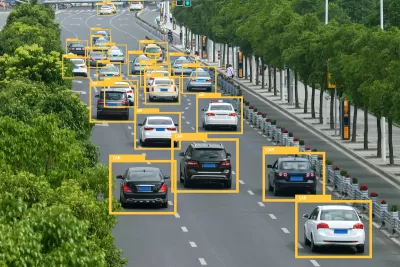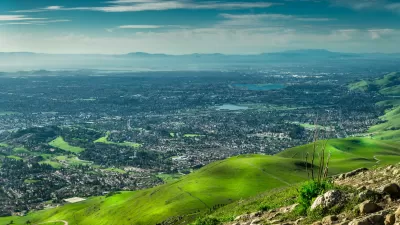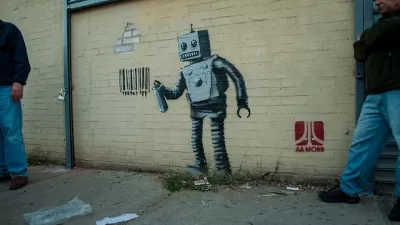AI could automate many urban systems, but that may not mean it’s a good idea.

In an opinion piece in The Conversation, Federico Cugurullo cautions against letting artificial intelligence take too much control of our cities. As Cugurullo explains, the emerging field of AI urbanism differs from ‘smart cities’ that use data to manage urban services. “AI urbanism represents a new way of shaping and governing cities, by means of artificial intelligence (AI). It departs substantially from contemporary models of urban development and management.”
In other words, “AI urbanism does not simply quantify, it tells stories, explaining why and how certain events take place.” Yet, “as the recent example of ChatGPT has made clear, AI can produce a detailed account, without grasping its meaning.”
AI systems bring us closer to sci-fi worlds in which, for example, technology predicts where crime might happen. “This might save our city managers some time, given AI’s extraordinary velocity in analysing large volumes of data, but the price that we are paying in terms of social justice is enormous.”
Some drawbacks to AI pointed out by Cugurullo include its voracious energy consumption and demonstrated discrimination in housing and real estate that perpetuates historical patterns. Meanwhile, the more autonomous we make cities, the less control we have, Cugurullo claims.
“As the autonomy of AI grows, ours decreases and the rise of autonomous cities risks severely undermining our role in urban governance. A city run not by humans but by AIs would challenge the autonomy of human stakeholders, as it would also challenge many people’s wellbeing.”
FULL STORY: AI could make cities autonomous, but that doesn’t mean we should let it happen

Alabama: Trump Terminates Settlements for Black Communities Harmed By Raw Sewage
Trump deemed the landmark civil rights agreement “illegal DEI and environmental justice policy.”

Planetizen Federal Action Tracker
A weekly monitor of how Trump’s orders and actions are impacting planners and planning in America.

The 120 Year Old Tiny Home Villages That Sheltered San Francisco’s Earthquake Refugees
More than a century ago, San Francisco mobilized to house thousands of residents displaced by the 1906 earthquake. Could their strategy offer a model for the present?

Ken Jennings Launches Transit Web Series
The Jeopardy champ wants you to ride public transit.

BLM To Rescind Public Lands Rule
The change will downgrade conservation, once again putting federal land at risk for mining and other extractive uses.

Indy Neighborhood Group Builds Temporary Multi-Use Path
Community members, aided in part by funding from the city, repurposed a vehicle lane to create a protected bike and pedestrian path for the summer season.
Urban Design for Planners 1: Software Tools
This six-course series explores essential urban design concepts using open source software and equips planners with the tools they need to participate fully in the urban design process.
Planning for Universal Design
Learn the tools for implementing Universal Design in planning regulations.
Clanton & Associates, Inc.
Jessamine County Fiscal Court
Institute for Housing and Urban Development Studies (IHS)
City of Grandview
Harvard GSD Executive Education
Toledo-Lucas County Plan Commissions
Salt Lake City
NYU Wagner Graduate School of Public Service





























